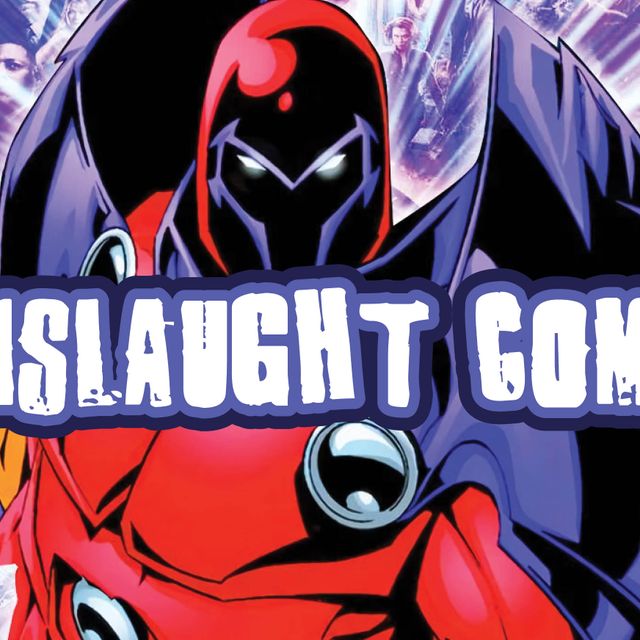 What makes a comic a key issue? What's the difference between major and minor keys? Rookie collectors have questions, and I have answers.
What makes a comic a key issue? What's the difference between major and minor keys? Rookie collectors have questions, and I have answers.
WHAT IS A KEY ISSUE?
It can be difficult to define a key issue because there is no established definition or criteria. Collectors have long debated what is and what is not a key issue for that reason. Some argue that only first appearances qualify while others suggest that true key issues must come from the Silver or Golden Age of comics when the original superheroes were introduced.
 My personal belief is that a key comic is one that has overreaching importance. In other words, it needs to stand out as a significant moment whether it's for specific characters, series, or the industry itself. Sure, a hero's first appearance is the most notable, but keys can extend to the debut of a new costume, the first appearance of a noteworthy villain, or the premiere of a character's own series.
My personal belief is that a key comic is one that has overreaching importance. In other words, it needs to stand out as a significant moment whether it's for specific characters, series, or the industry itself. Sure, a hero's first appearance is the most notable, but keys can extend to the debut of a new costume, the first appearance of a noteworthy villain, or the premiere of a character's own series.
Key issues are not limited to the characters in those pages, either. They can extend to a creator's first work in the industry or on a career-defining series. For instance, there's Captain America Comics #3 featuring Stan Lee's debut as a comic book writer. Then there's Marvel Comics #1, which was Timely Publications' first comic. The Timely company would go on to become Marvel Comics.
 MAJOR KEYS AND HOLY GRAILS
MAJOR KEYS AND HOLY GRAILS
When we talk about key issues, they're usually broken into two categories: major and minor. The easiest way to tell the difference between them is price but those higher prices are there for a reason.
Major keys are just that - major. They are issues with a large impact not only on that particular series but on the industry and collecting. In this case, the bulk of major keys deal with first appearances, and they come with hefty price tags. These aren't just any first appearances (sorry, Hydro-Man). They are the debuts and major moments for significant characters with massive followings. In many cases, these issues are hard to come by, which makes them even more collectible.
 These major keys have a subgroup of their own: holy grails. This designation is a metaphor for something that is virtually unattainable. Grails are the elite of the elite in the collecting circles. They're also some of the hardest issues to own either because of price, rarity, or both. Think of a grail as a comic that is universally desired by collectors, but only a relatively small percentage own. Grails are reserved for issues like Action Comics #1, Detective Comics #27, Amazing Fantasy #15, etc.
These major keys have a subgroup of their own: holy grails. This designation is a metaphor for something that is virtually unattainable. Grails are the elite of the elite in the collecting circles. They're also some of the hardest issues to own either because of price, rarity, or both. Think of a grail as a comic that is universally desired by collectors, but only a relatively small percentage own. Grails are reserved for issues like Action Comics #1, Detective Comics #27, Amazing Fantasy #15, etc.
MINOR KEYS
Minor keys are the comics that have notable moments, but with much less impact and popularity, like The Mighty Thor #390, which marked the first time Captain America lifted Mjolnir, or the first time we see Mary Jane's face in Amazing Spider-Man #42. They tend to be easier to find and are usually reserved for fans of one particular character, series, or creator. Because minor keys aren't typically rare, they are less expensive than their counterparts.
 Take Marvel Super-Heroes Secret Wars #8, for example. It is a noteworthy and collectible issue because it introduced Spider-Man's black suit. That alone makes it a key, but, as comic fans know, that suit would eventually become the mega-popular anti-hero, Venom. Secret Wars #8, then, is an important minor key compared with Venom's first full appearance in the major key issue, Amazing Spider-Man #300.
Take Marvel Super-Heroes Secret Wars #8, for example. It is a noteworthy and collectible issue because it introduced Spider-Man's black suit. That alone makes it a key, but, as comic fans know, that suit would eventually become the mega-popular anti-hero, Venom. Secret Wars #8, then, is an important minor key compared with Venom's first full appearance in the major key issue, Amazing Spider-Man #300.
THE DEBATE
As I stated earlier, collectors wage a war of words over what is and is not a key issue. Like most things in the collecting world, it comes down to personal tastes and what you value the most. Let the debate begin.


